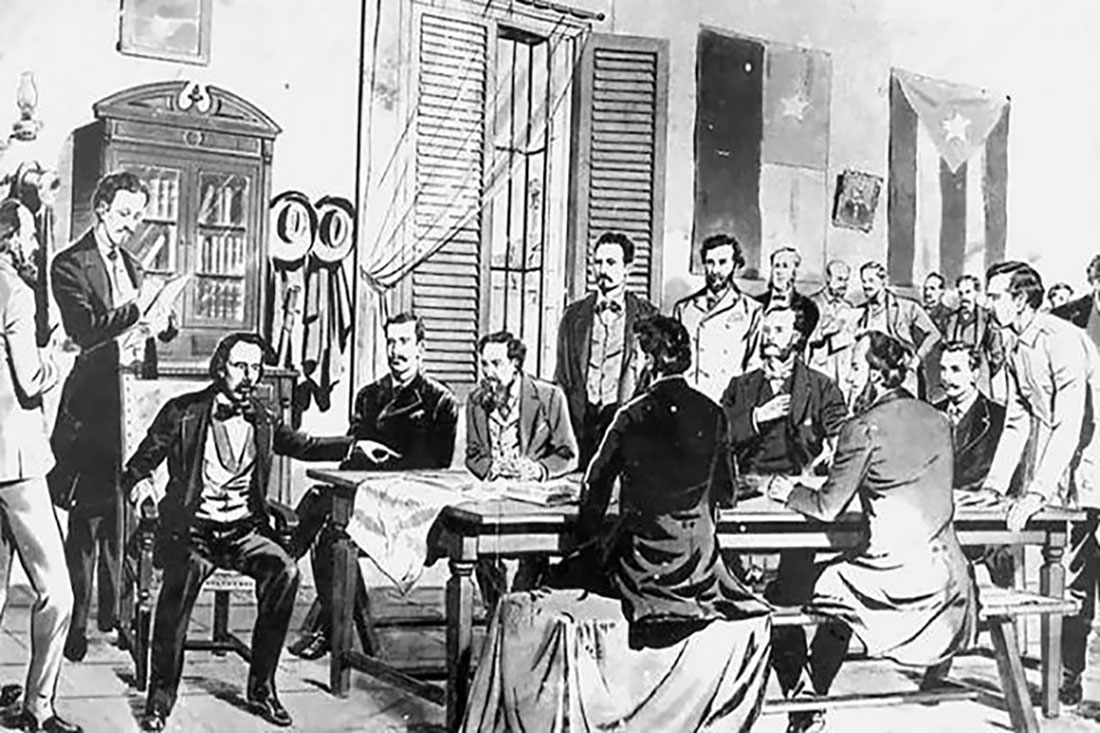Yaya’s house and history
Between October 11th and 12th, 1895, July 2nd, 1896, September 1st to 7th of that year, and November 9th, 1896, in the land that surrounded the wooden house stayed Major General Máximo Gómez Báez.
It was a farm belonging to the rural neighborhood of Sibanicú, located within the limits of the old cattle herd of the same name, which emerged in the 17th century. It was easy for the mambisado to get to it. It was difficult for the Spanish to identify it due to lost paths between the mountains and in “free territory” defended by armed collaborators and patriots.
It was the house belonging to the insurgent Juan Ronquillo Victoria, and used by Ramiro Ronquillo Fonseca to shelter the civil structure of the revolution or the Mambisa Prefecture of the eastern district of Puerto Príncipe.
La Yaya and constitutionality
In that isolated farm, the fourth and last of the mambisa constitutions of the war period was signed on October 29th, 1897. Under the wooden covering of the roof, on September 2nd -in compliance with the Electoral Law- the Designated representatives, although in an incomplete number, delayed the formal constitutional process until the 19th of that month, to integrate the Constituent Assembly, which was finally fully structured on October 10th.
On October 30th, the elect took the oath. The presence of Gómez was of capital importance to assert the military direction of the war and hold the liberalism of the Government Council, with powers exceeded and in permanent contradiction with the military direction to limit its power. The war against Spain had not yet ceased.
Domingo Méndez Capote and Carlos Manuel de Céspedes drew up the project. Those gathered greeted with applause the elected President of the Republic in Arms, Major General Bartolomé Masó Márquez.
Another success was the recognition for the first time that the Republic of Cuba included the territory occupied by the Island of Cuba and adjacent islands and keys. The Greater Antilles was made up of the territories (not provinces) of Cuba: Holguín, Camagüey, Las Villas, Havana-Matanzas and Pinar del Río.
While the better regulation of individual and political rights was welcomed by the deliberatives.
As a formula different from that of Jimaguayú, the Government Council would be made up of the president and vice president, four secretaries of state: War, Finance, Foreign Affairs and Interior, and a secretary, in addition to the powers contained in Article 22. The body it could ratify the peace treaty concluded with Spain, temporarily providing for the regime and government of the Republic until a definitive constituent assembly met.
It was, without a doubt, an advance with respect to the constituent assembly of Jimaguayú, of September 1895. To highlight the attributions of the President of the Republic, and to prepare the wording of the Law of Military Organization and Ordinances, specifying that the supreme command of the Army would rest on the General in Chief and adding the figure of Lieutenant General for his replacement in case of death or other circumstance.
For citizenship by naturalization, the demonstration of roots in the country of those who had joined the armed struggle of their own free will was presumed. To the above would be added the Duty of Defense. Among the cultural achievements was free education for the entire territory of the Republic.
Undoubtedly there were more hits than zigzags contained in the constitutional text of La Yaya, of October 29th, 1897. All for the freedom, independence and full sovereignty of the Homeland; source of history and inspiring constitutional legislation of our process of emancipatory struggles, to which the present and future generations of Cuban men and women should look to strengthen hopes in that prosperous and free homeland that those legislators designed for the good of all.
Translated by: Aileen Álvarez García






